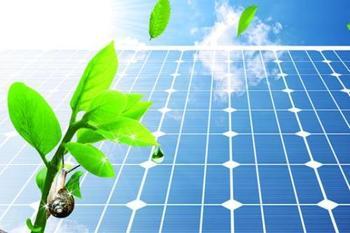Recently, semi-annual reports of domestic listed photovoltaic companies have been released, and about 70% of enterprises in the first half of the year have realized profits. The domestic power plant projects that companies were unwilling to participate in earlier have become the driving force for growth. After the industry downturn in the past two years, the performance of some companies in the first half of this year has turned to profitability. At present, there are 34 listed solar companies in Shanghai and Shenzhen. The reporter counted 30 companies that issued interim reports and performance forecasts. Of these, 22 listed companies had a pre-profit for the first half of the year, accounting for 70% of the total number of companies that had announced their interim results in 2013. In the first half of the year, the gross profit margin of the TBEA was 17.35%, and the main income of the Sunshine Power in the first half of the year increased by 99.6% year-on-year. Many companies such as aerospace and electromechanical also recently announced their forecasts exceeding expectations. Most companies said that it is the photovoltaic power plant project that contributes to the performance of the company. “In order to shift the sales pressure brought about by the traditional component business, most PV companies will focus their investment in the first half of the year on a profitable power plant. Under the strong support of the government, the power plant project also brings more than expected profits to the company. "Shenyin Wanguo new energy analyst Yu Wenjun said. In the case that foreign sales are met with resistance from both Europe and the United States, the domestic market is expected to “save the marketâ€. Among them, distributed photovoltaic power generation is regarded as the highlight of the development of the domestic photovoltaic market in the future and has received strong support from the government. A few days ago, the Ministry of Finance issued a "Circular on the Implementation of Distributed Photovoltaic Power Generation in Accordance with Issues on Electricity Subsidy Policy and Other Issues," stating that subsidies should be given on the basis of power generation (ie, electricity subsidies), and subsidy funds should be issued by power grid companies according to the electricity billing period. It also clarified the methods, procedures and accounting standards for the appropriation of subsidy funds. Summarizing foreign experience, the driving force for the development of distributed generation in the United States, Europe, and Japan is the clear definition of the timely distribution of subsidies and accounting standards. The distributed power generation scheme adopts the method of subsidizing electricity. This means that if the company does not generate electricity, it will not be able to obtain any subsidies, which is more conducive to the healthy development of the power plant to some extent. It is worth noting that this national policy focuses on distributed generation and does not cover photovoltaic integrated buildings. According to industry insiders, the integration of building photovoltaics, sub-curtain walls and roofs are not economical, and their efficiency is not high. At present, it is not suitable for vigorous promotion. It's right to do a good job or a mature one. This year will be the first year of large-scale start-up of domestic photovoltaic market. According to the plan, from 2013 to 2015, the annual average installed capacity of photovoltaic power generation is about 10 million kilowatts, and the total installed capacity by 2015 will reach 35 million kilowatts or more. It has been revealed that in the near future, the 50 percent preferential policy for the value-added tax of PV power plant projects will be clarified. PV plant operating companies have a VAT of 17%. If the value-added tax is lowered by 8.5 percentage points, it is equivalent to an increase in the on-grid tariff of 0.02-0.04 points/kWh, and the return rate of the power station will increase by 1%-2%, which will directly benefit the photovoltaic power plant operators. People in the industry believe that the photovoltaic industry may be in the second half of the year. In addition, although the amount of subsidy has not yet been finalized, Lin Boqiang, director of the China Energy Economic Research Center at Xiamen University, believes that the price of electricity for PV access is initially higher than the price. This is conducive to mobilizing the enthusiasm of the photovoltaic companies, and is beneficial to the development of the entire industry. The tariff of the network access can be adjusted according to the actual situation in the later period. 2.5MM Wire To Board Connectors
2.5MM Wire To Board Connectors.
Connectors can be classified into three basic types: line to line, line to board and board to board. These three types of connections are not entirely different. There are two reasons for this type of overlap. First of all, the design of the same connector only needs to be redefined after slightly changing the connection mode, that is to say, it becomes a new design scheme that can be applied to another type of connection mode; secondly, a cable can be installed with a line to line connector at one end and a line to board connector at the other end during assembly, for example, the appearance of class 5 I / O connector is the most common one See for example. If we avoid the fuzziness of this kind of connection, it will provide an effective basis for connector classification.
2.5MM Wire To Board Connectors ShenZhen Antenk Electronics Co,Ltd , https://www.antenksocket.com